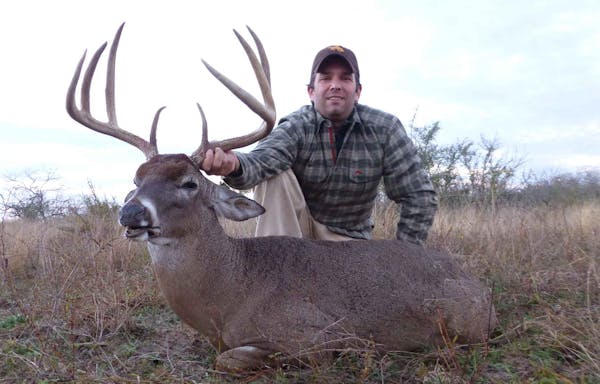HOSMER, S.D. – The buzzkill surrounding South Dakota pheasant hunting this year was palpable as we drove down Main Street.
This was prime territory in the pheasant capital of the United States. Shooting would open at 10 a.m., and it was time to get rocking .
Strangely, few people were seizing the day. Hunters were sparse, and the few we spotted were still eating pancakes at the breakfast cafe next door to Hosmer City Liquor. We had seen nothing like it in four previous pheasant trips to the Great Plains between Aberdeen and the Missouri River.
"It all has to do with loss of habitat and fewer birds," said Vickie Kitchell, owner of a hunting lodge east of Ipswich. "We just aren't seeing as many hunters."
"Hunter participation is way down," said Tim McCurdy, supervisor of South Dakota conservation officers in the Aberdeen region. "It's seriously low."
We heard about it every time we stopped for a meal or a drink: Where are all the hunters?
After three days of reasonable success afield, we were asking ourselves the same question.
"It's nice when you can shoot 20 shells in a day," said Joe Heckman of West Liberty, Iowa. "And when you're out here in the wind, you better be quick on the draw."
Heckman and Dylan Hillyer, also from West Liberty, ventured to Edmunds County, S.D., during the last week of daylight savings time to meet up with their friend Mike Ward of St. Paul, Mike's father, Scott, of Inver Grove Heights and myself. The five of us were lucky to be flanked by Joe's energetic Vizsla pointers, Bailey, 6, and Mya, 2.
On the first push of the first day, the dogs bounced a pair of roosters out of tall grass. With wings flapping loudly, both birds veered into the wind and were on the loose when Scott and Dylan unloaded. The two ringnecks landed in nearby corn stubble, and suddenly things were looking up.
In the very next patch, two more cocks flushed. The first of those birds took blasts from three of our guns — a $15 bird if there ever were one, based on how many shots were fired. With Bailey and Mya preoccupied with ground scent, I ran to fetch it from short cover before it could scoot away. It was a good thing, too, because the bird was kicking and trying to right itself.
Experience has taught us that wild pheasants in these parts are highly resilient. They can be raked by pellets, tilted, somersaulted and dropped from high in the sky only to hit the ground running.
But now we had four roosters in the bag, no escapees and a mere 25 minutes of walking under our belts. We were no longer wary that a light, steady rain would impede the hunt. On the contrary, pheasants were holding super tight to the ground. We knew we were walking past a lot of birds, but those that we disturbed were generally taking short, low flights and making good targets.
"You almost have to step on one to get it moving," Joe said.
Another early observation was that the roosters lacked stature. It wasn't a surprise that many of the 28 birds we eventually harvested were the young of the year. Rather, we noticed that some were smaller than usual.
McCurdy said the stunted growth has been prevalent throughout the area. Conservation officers are estimating that first-year pheasants account for 75 percent to 80 percent of the quarry this year. Many are undersized, McCurdy said, because a prolonged dry spell in June and July seriously reduced the insect population that young pheasants depend on for food. Moreover, a lot of the birds were hatched late because of re-nesting in the spring, he said.
By the end of our second day of hunting, we were fairly convinced that our location was better than most. We were seeing about as many hens and roosters as we always did, even though the official preseason roadside pheasant count for our area was down substantially from prior years. In one day, for example, we saw four mega-flushes of 50 birds or more. We even had chances during a weird period of wind-driven mist on Sunday afternoon.
But McCurdy said his region's pheasant population — like the rest of the state — is "definitely down."
Kitchell said some hunters canceled reservations this year after the South Dakota Game Fish & Parks agency published a disappointing brood report — down 20 percent from a year ago. The culprit is farming's ever-growing conversion of grassland into row crops. South Dakota lost 1.8 million acres of grassy habitat from 2006-12, and the trend is continuing.
At Kitchell's Eagle Bar, a family-friendly eating and drinking establishment, we arrived a year ago to find a lively crowd of locals and visiting hunters. This year, the Friday night scene at Eagle was a bust. The place was open but nearly empty.
The pheasant is South Dakota's state bird and its most sought-after game species. Even in raw weather, they hold you in suspense. It shouldn't be a surprise — but it always is — when a hen or rooster pulses up out of the grass.
"You've got an instant to shoot at them," Scott said.
We hiked 8-9 miles a day, sometimes in thickets that made our hip flexors burn. Badger holes — including some that were 10 inches across — were a constant nemesis, and high winds on Sunday and Monday favored the birds. But we took advantage whenever we could and consistently tried to block the pheasants' exit routes by staging hunters upfield while the dogs and other hunters zig-zagged through weed patches, sloughs, corn rows, dense nesting cover and tree belts.
During one memorable pass, I posted myself at the far end of a large, dried-out swamp. It was three football fields long and shaped like a bathtub. Filled with dormant cattails, cockleburs, reed canary grass and other vegetation, it had been a honey hole on past pheasant trips.
The four other hunters lined up on the opposite end and walked toward me. The birds had been holding fairly tight to the ground, but now they were flushing wildly and out of range from the other guys. Roosters and hens were zooming by me in large numbers, but I couldn't shoot. My 12-gauge was cased in the truck, and I was armed only with a camera.
The vagaries of hunting wild pheasants is part of the charm. We surrounded the honey hole the next day. But this time, gusts of 35 miles per hour made it difficult to hit them.
Walking toward the next patch, five roosters were hiding in a small triangle of short grass. We were carrying our guns over our shoulders, and the birds flushed just 20 feet behind us. Shots were fired, but the ringnecks were too far gone.
"If you always shot your limit, it wouldn't be as fun," Dylan said.
Chinese Grand Prix could deliver drama to F1 and slow Verstappen's victory march
Rivalries on tap with Barcelona-Chelsea and Lyon-PSG in Women's Champions League semifinals

